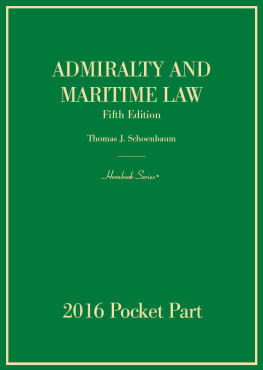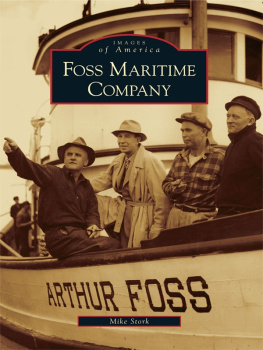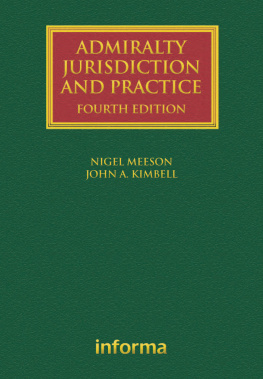xxv

xxvii
ADMIRALTY AND MARITIME LAW
Fifth Edition
2016 Pocket Part
Chapter 1
ADMIRALTY JURISDICTION
_____________
11 The Constitution and the Statutory Basis for Jurisdiction
For an interesting in-depth analysis of the landmark case, Jackson v. The Magnolia, 61 U.S. 296 (1857), see Goldstein, Beyond the Tide: Beginning Admiralty with the Steamboat Magnolia, 55 St. Louis U. L. J. 521 (2011).
12 Admiralty Jurisdiction: General Considerations
In Holloway v. Pagan River Dockside Seafood, Inc., 669 F.3d 448 (4th Cir. 2012), the Fourth Circuit reversed the district courts dismissal of a seamans claims and ruled the court below had subject matter jurisdiction. The court emphasized that lawyers and courts must not blur the line between a motion to dismiss for failure to state a claim, on the one hand, and a motion to dismiss for lack of subject matter jurisdiction, on the other hand. If a plaintiff states the essential elements of a Jones Act claimby alleging (1) that he/she is a seaman; (2) who suffered injury; (3) employer negligence; and (4) causationfederal courts have subject matter jurisdiction under admiralty as well as federal question, regardless of how thinly supported his claim may be.
For an in-depth discussion of personal jurisdiction in the context of a suit against a foreign-based shipping company, see Mylonakis v. M/T Georgios M, 909 F.Supp.2d 691 (S.D. Tex. 2012).
In Volumecocomo Apparel, Inc. v. Expeditors Intl of Washington, Inc., 2012 WL 1189468, 2013 AMC 1382 (N.D. Cal. 2012), the court ruled that there was no jurisdiction over a Vietnamese barge carrier that had no contact with California.
The Second Circuit affirmed the district courts dismissal of an action brought by two Indian nationals for injuries incurred while crew members on a vessel when it was hijacked by Somali pirates. Dismissal was based on lack of personal jurisdiction over the primary defendants and on grounds of forum non conveniens . Chirag v. MT Marida Marguerite Schiffahrts, 604 F. Appx 16 (2d Cir. 2015).
In Patterson v. Aker Solutions Inc., ___ F.3d ___, 2016 WL 3254605 (5th Cir. 2016), the Fifth Circuit affirmed the dismissal of a complaint for personal injury filed in Louisiana against a Norwegian company for an incident that occurred off the coast of Russia. The court held that the defendants limited contacts with the United States, consisting wholly of eleven employee secondment agreements, were insufficient to satisfy due process concerns.
13 Navigable Waters: The Locality Aspect of the Jurisdiction
In PPL Montana, LLC v. Montana, 132 S.Ct. 1215 (2012), the Supreme Court of the United States decided a landmark case on the topic of navigability, ruling that the Montana Supreme Court erred by discounting the segment by segment basis for determining the navigability of a river. The court clearly distinguished between title navigability under the Equal Footing Clause of the US Constitution and navigability as a regulatory concept. The court ruled that while the Equal Footing doctrine is rooted in the Constitution, the related public trust doctrine is a matter of state law.
The Eleventh Circuit ruled that certain waterways may be navigable for purposes of admiralty and maritime jurisdiction even though they are not currently used to support interstate commerce. The plaintiff, a company specializing in recovery and sale of submerged logs, brought an in rem action against various logs recovered from the bottom of two Georgia waterways, seeking a salvage award of all the submerged logs in those waterways. The State of Georgia opposed the action, asserting that the waterways were not presently navigable and the court had no admiralty jurisdiction. The district court ruled for the State and the plaintiff. The appellate court reversed, holding a waterway is navigable for admiralty jurisdiction purposes if it presently supports interstate commercial activity or if, in its present condition, it is capable of supporting interstate commercial activity. Aqua Log, Inc. v. Lost & Abandoned Pre-cut Logs, 709 F.3d 1055 (11th Cir. 2013).






























